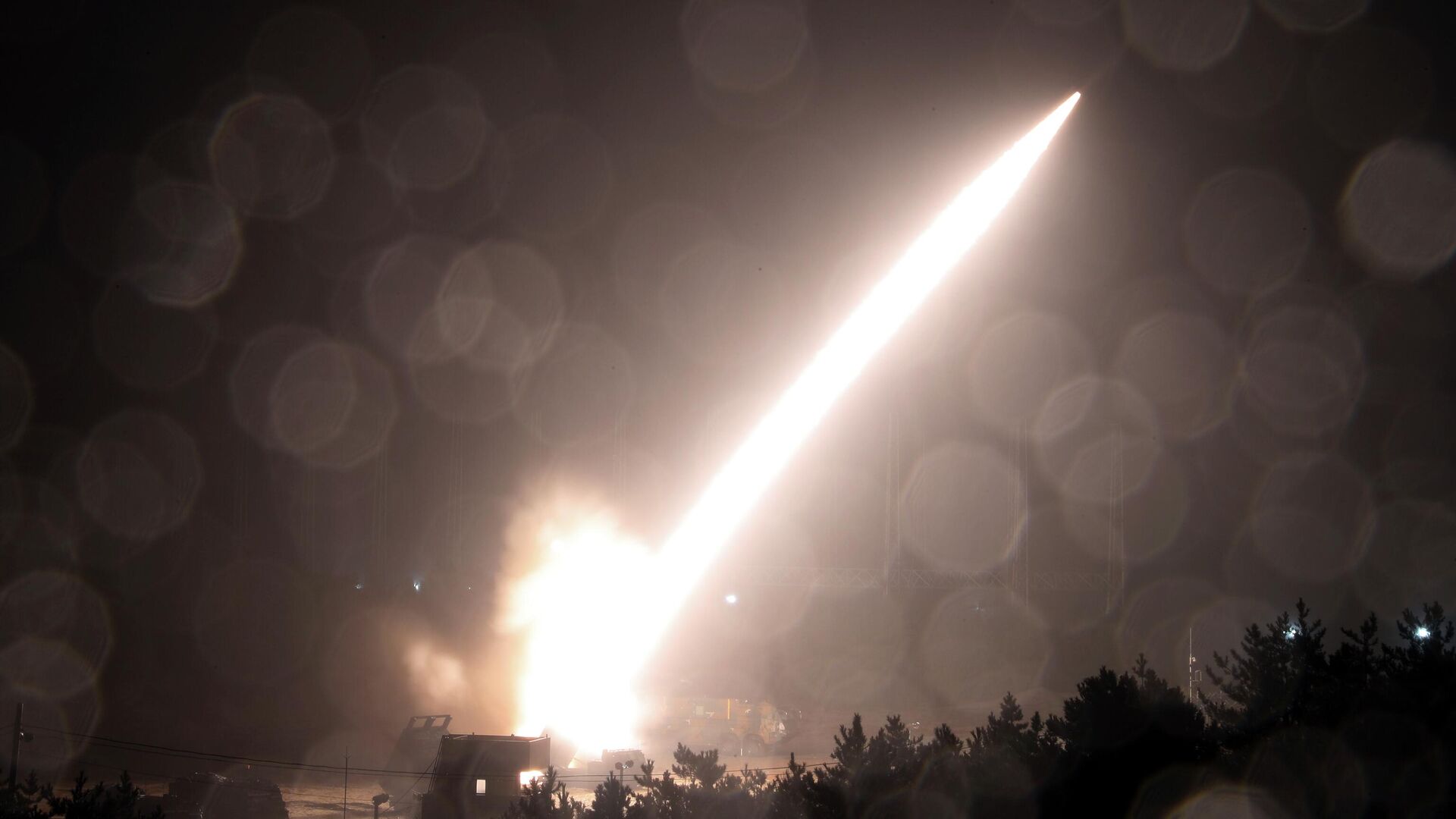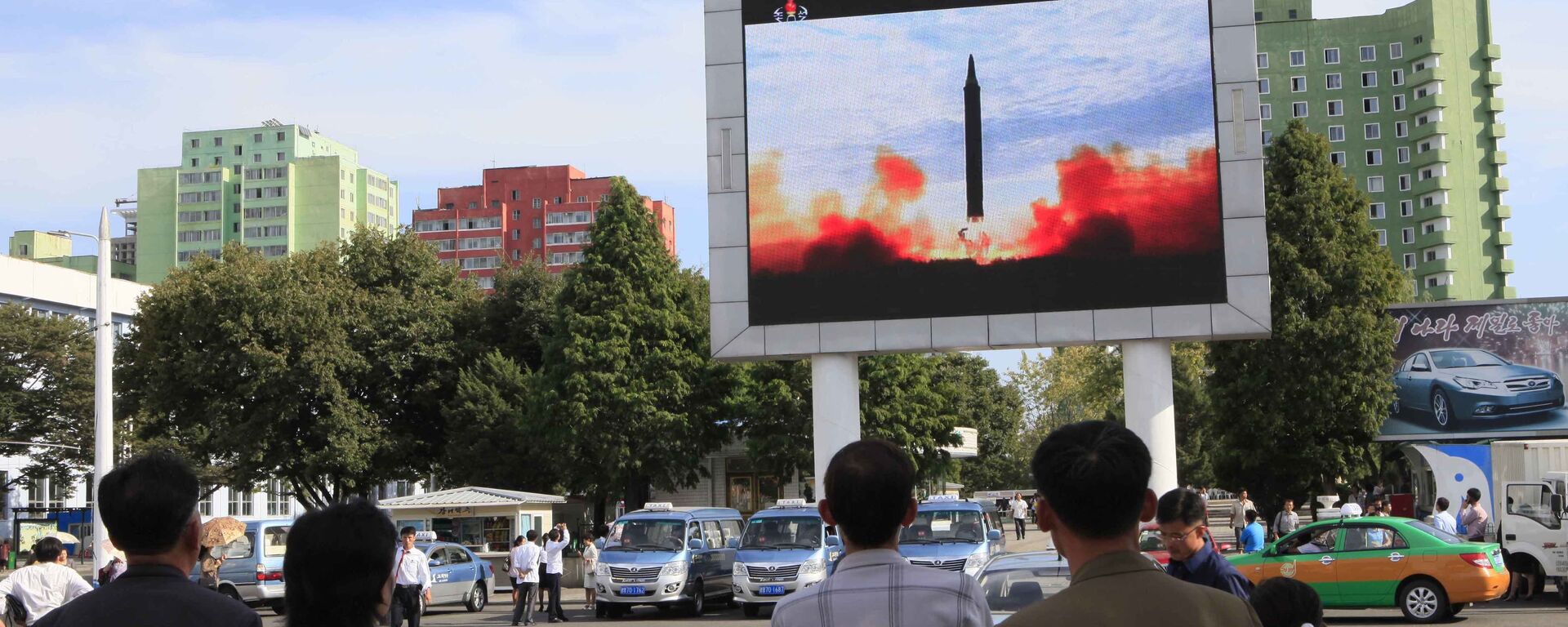https://sputnikglobe.com/20230714/us-drives-korea-situation-to-brink-of-nuclear-war---north-korean-envoy-to-un-1111875492.html
US Drives Korea Situation to 'Brink of Nuclear War' - North Korean Envoy to UN
US Drives Korea Situation to 'Brink of Nuclear War' - North Korean Envoy to UN
Sputnik International
Washington agreed to deploy nuclear-powered submarines in South Korean waters in April, prompting widespread concerns. 14.07.2023, Sputnik International
2023-07-14T16:39+0000
2023-07-14T16:39+0000
2023-09-18T13:37+0000
world
us
nuclear non-proliferation treaty (npt)
south korea
korean peninsula
yoon suk yeol
nuclear war
nuclear weapons
north korea
https://cdn1.img.sputnikglobe.com/img/07e6/0a/05/1101520923_0:160:3072:1888_1920x0_80_0_0_df8173e3958ef94fa8b3d226b80fc3d3.jpg
The United States risks pushing the situation in Asia “to the brink of nuclear war” with its actions, North Korea’s envoy to the United Nations Kim Song has said.Speaking in front of a UN Security Council meeting convened on Thursday over this week’s ICBM test by North Korea, Kim insisted that said launch “had no negative effect on the security of the neighboring countries.”According to the North Korean diplomat, it is the “military provocations” staged by the US and its “followers” against Pyongyang that negatively impact the situation in the region, with the “military security pattern in the Korean Peninsula” reaching the “phase of a nuclear crisis beyond the Cold War era.”He also argued that frequent deployments of nuclear submarines and nuclear strategic nuclear bombers by the United States “in and around the Korean Peninsula," as well as the US conducting “large-scale joint military exercises” in the area, effectively result in the situation being driven “to the brink of a nuclear war.”On Wednesday, North Korea tested its newest intercontinental ballistic missile, the Hwasong-18. The solid-fuel missile successfully navigated a distance of slightly over 1,000 kilometers before diving into the waters of the Sea of Japan.Back in April, the United States and South Korea agreed to deploy US nuclear-powered submarines in South Korean waters, though it does not imply that Seoul would violate its obligations under the Nuclear Non-Proliferation Treaty.However, earlier this year, in January, South Korean President Yoon Suk-yeol suggested that South Korea might consider either acquiring its own nuclear weapons or asking the United States to redeploy US nuclear warheads on South Korean soil.The US originally stationed its nuclear warheads in South Korea in 1958 amid the Cold War and kept raising their numbers over the years, only to pull them out completely in 1991 at the behest of then-US President George H.W. Bush.
https://sputnikglobe.com/20230713/what-is-north-koreas-new-solid-fuel-icbm-hwasong-18-missile-1111858631.html
south korea
korean peninsula
north korea
Sputnik International
feedback@sputniknews.com
+74956456601
MIA „Rossiya Segodnya“
2023
Sputnik International
feedback@sputniknews.com
+74956456601
MIA „Rossiya Segodnya“
News
en_EN
Sputnik International
feedback@sputniknews.com
+74956456601
MIA „Rossiya Segodnya“
Sputnik International
feedback@sputniknews.com
+74956456601
MIA „Rossiya Segodnya“
security situation on korean peninsula, us-south korea nuclear agreement
security situation on korean peninsula, us-south korea nuclear agreement
US Drives Korea Situation to 'Brink of Nuclear War' - North Korean Envoy to UN
16:39 GMT 14.07.2023 (Updated: 13:37 GMT 18.09.2023) Washington agreed to deploy nuclear-powered submarines in South Korean waters in April, prompting widespread concerns.
The United States risks pushing the situation in Asia “to the brink of nuclear war” with its actions, North Korea’s envoy to the United Nations Kim Song has said.
Speaking in front of a UN Security Council meeting convened on Thursday over this week’s
ICBM test by North Korea, Kim insisted that said launch “had no negative effect on the security of the neighboring countries.”
According to the North Korean diplomat, it is the “military
provocations” staged by the US and its “followers” against Pyongyang that negatively impact the situation in the region, with the “military security pattern in the Korean Peninsula” reaching the “phase of a nuclear crisis beyond the Cold War era.”
“In April, the United States cooked up the ‘Washington Declaration,’ a platform for a nuclear showdown with the DPRK. As a follow-up, the US is openly planning to deliberate on the use of nuclear weapons against our state through a meeting of the US-South Korea ‘Nuclear Consultative Group’ which will be the parental body of the US-Japan-South Korea ‘Tripartite Nuclear Alliance’,” Kim said.
He also argued that frequent deployments of nuclear submarines and nuclear strategic nuclear bombers by the United States “in and around the Korean Peninsula," as well as the US conducting “large-scale joint military exercises” in the area, effectively result in the situation being driven “to the brink of a nuclear war.”
On Wednesday, North Korea tested its newest intercontinental ballistic missile, the Hwasong-18. The solid-fuel missile successfully navigated a distance of slightly over 1,000 kilometers before diving into the waters of the Sea of Japan.
Back in April, the United States and South Korea agreed to deploy US nuclear-powered submarines in South Korean waters, though it does not imply that Seoul would violate its obligations under the Nuclear Non-Proliferation Treaty.
However, earlier this year, in January, South Korean President Yoon Suk-yeol suggested that South Korea might consider either acquiring its own nuclear weapons or asking the United States to redeploy US nuclear warheads on South Korean soil.
The US originally stationed its nuclear warheads in South Korea in 1958 amid the Cold War and kept raising their numbers over the years, only to pull them out completely in 1991 at the behest of then-US President George H.W. Bush.



